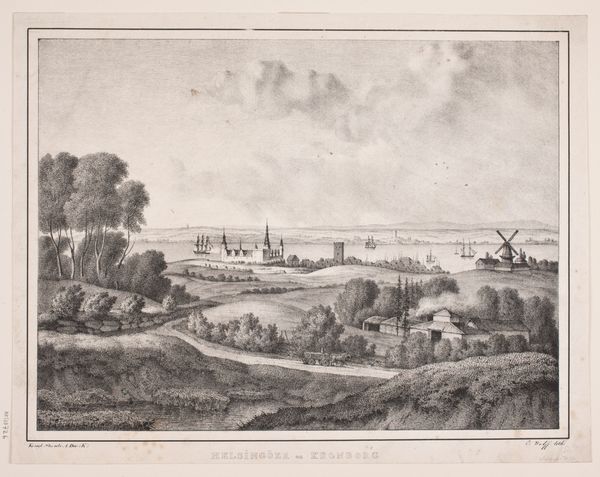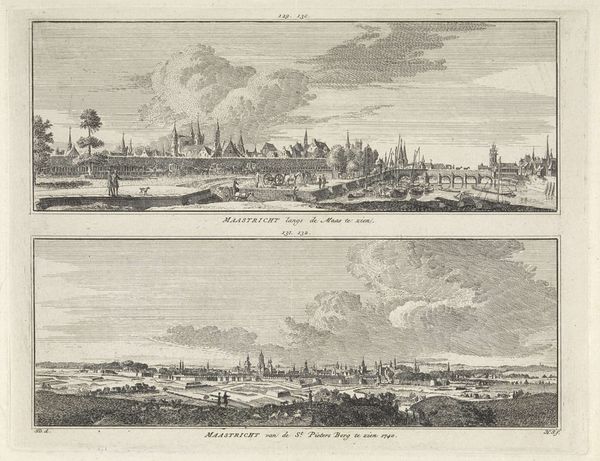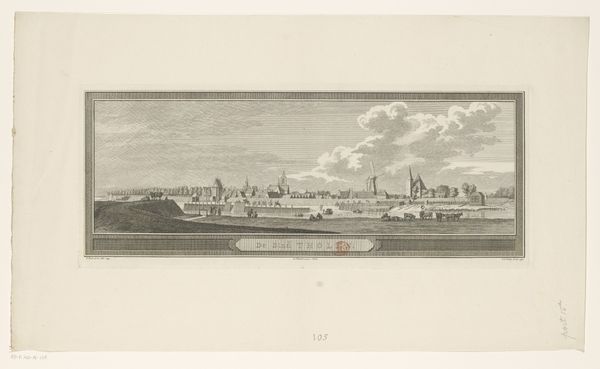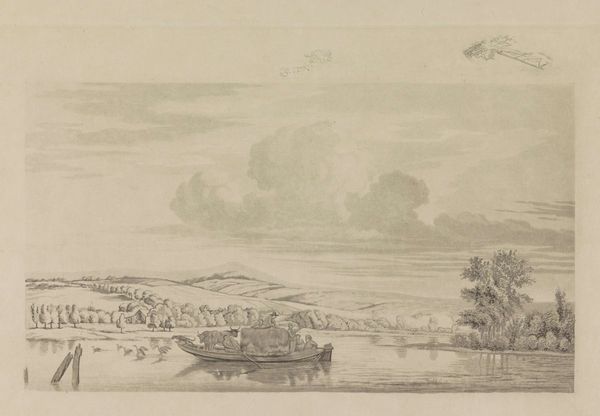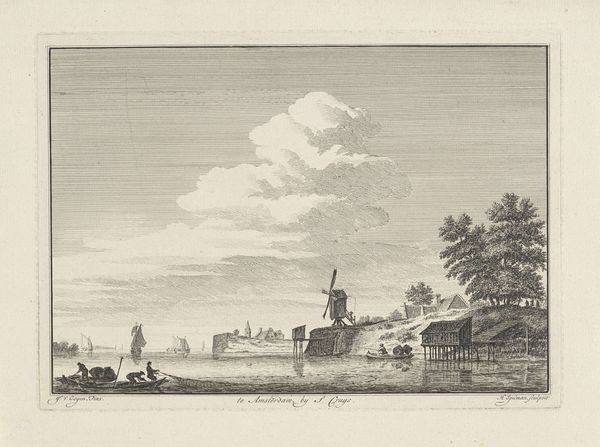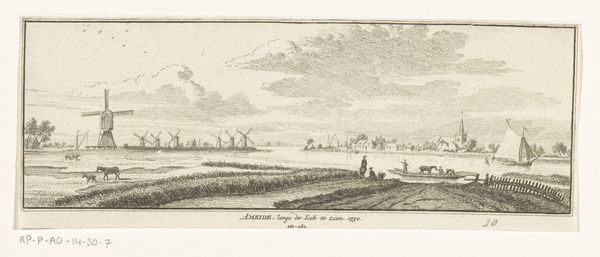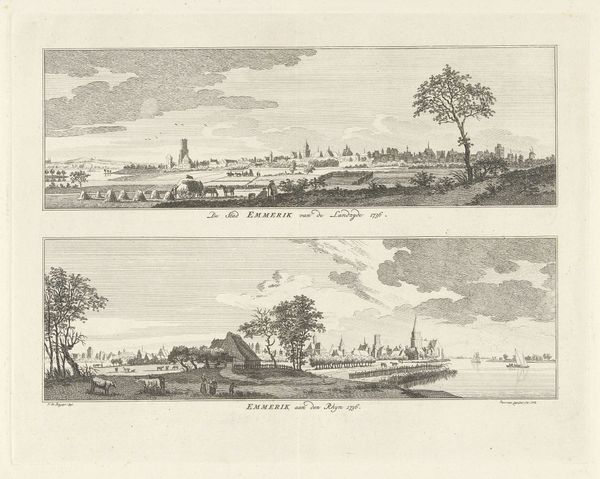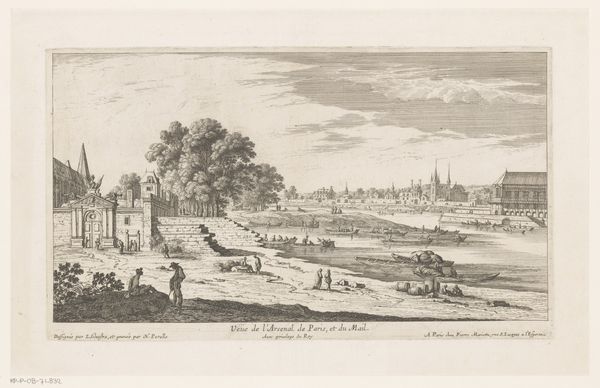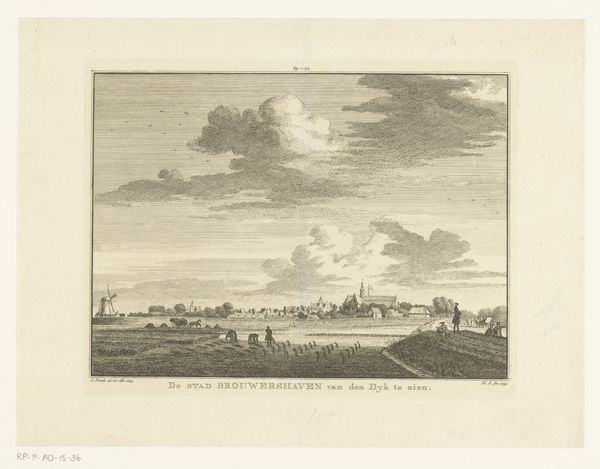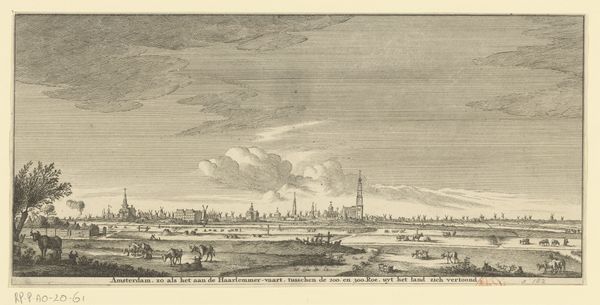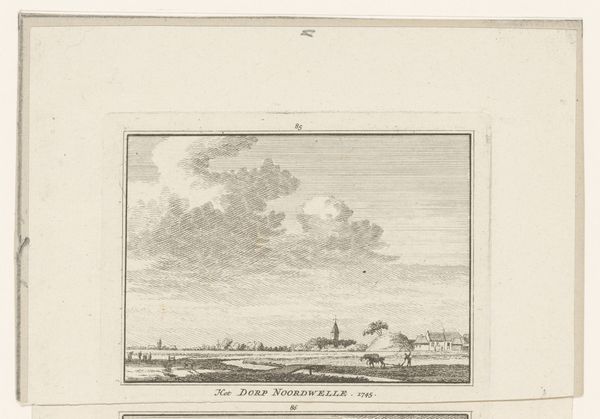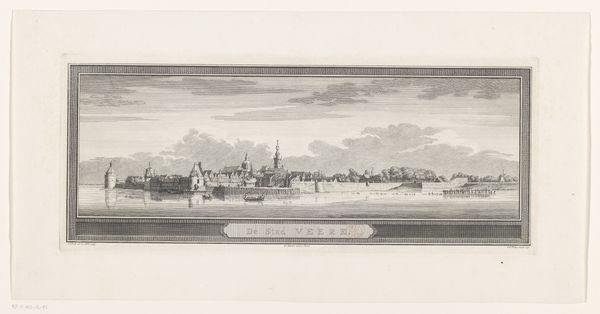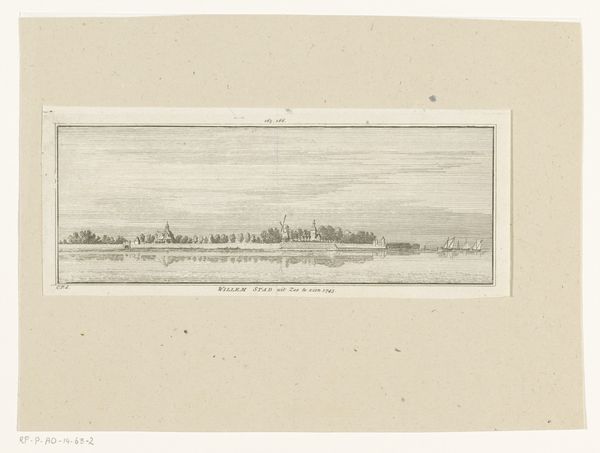
print, etching, engraving
#
dutch-golden-age
# print
#
etching
#
old engraving style
#
landscape
#
perspective
#
historical photography
#
19th century
#
line
#
cityscape
#
history-painting
#
engraving
#
realism
Dimensions: height 164 mm, width 204 mm
Copyright: Rijks Museum: Open Domain
Editor: So, this is Hendrik Spilman’s “Gezicht op Arnemuiden en gezicht op Meliskerke,” or "Views of Arnemuiden and Meliskerke," an etching and engraving print, created sometime between 1754 and 1792. I'm struck by the clarity of detail; it almost feels like looking at an old photograph capturing quiet Dutch towns. What visual cues really stand out to you? Curator: For me, it's the twin perspective at play. The pairing, offering two different viewpoints, recalls diptychs – historically a hinged, two-paneled artwork, often carrying religious significance. Here, instead of religious iconography, we have landscapes, presented almost as complementary reflections of Dutch life. Consider what these towns, side-by-side, communicate about Dutch identity and values during that time. What visual connections or contrasts do you observe? Editor: I see how both feature prominent churches, indicating the centrality of religion. But the top half feels more connected to the water, with sailboats suggesting trade and exploration, while the lower scene seems very much rooted in the land and agriculture. Is it a stretch to read a subtle tension between those ways of life? Curator: Not at all. These carefully composed landscapes reveal the symbiotic relationship between land and sea. What else do the human figures tell you, scattered sparsely in both panels? They're not heroic figures, but... Editor: Everyday citizens. Just figures going about their business. So the artist isn't glorifying the landscape so much as recording daily life, in a sense? Almost like a documentary? Curator: Precisely. These prints act as visual records and symbolic anchors, connecting the viewer to a shared past and, perhaps, instilling a sense of pride in local heritage. It makes me wonder what future generations will take away from them. Editor: I’ve never considered prints as encapsulating collective cultural memory. I’ll definitely think about that from now on. Curator: And hopefully appreciate the weight of history a simple image can convey.
Comments
No comments
Be the first to comment and join the conversation on the ultimate creative platform.
